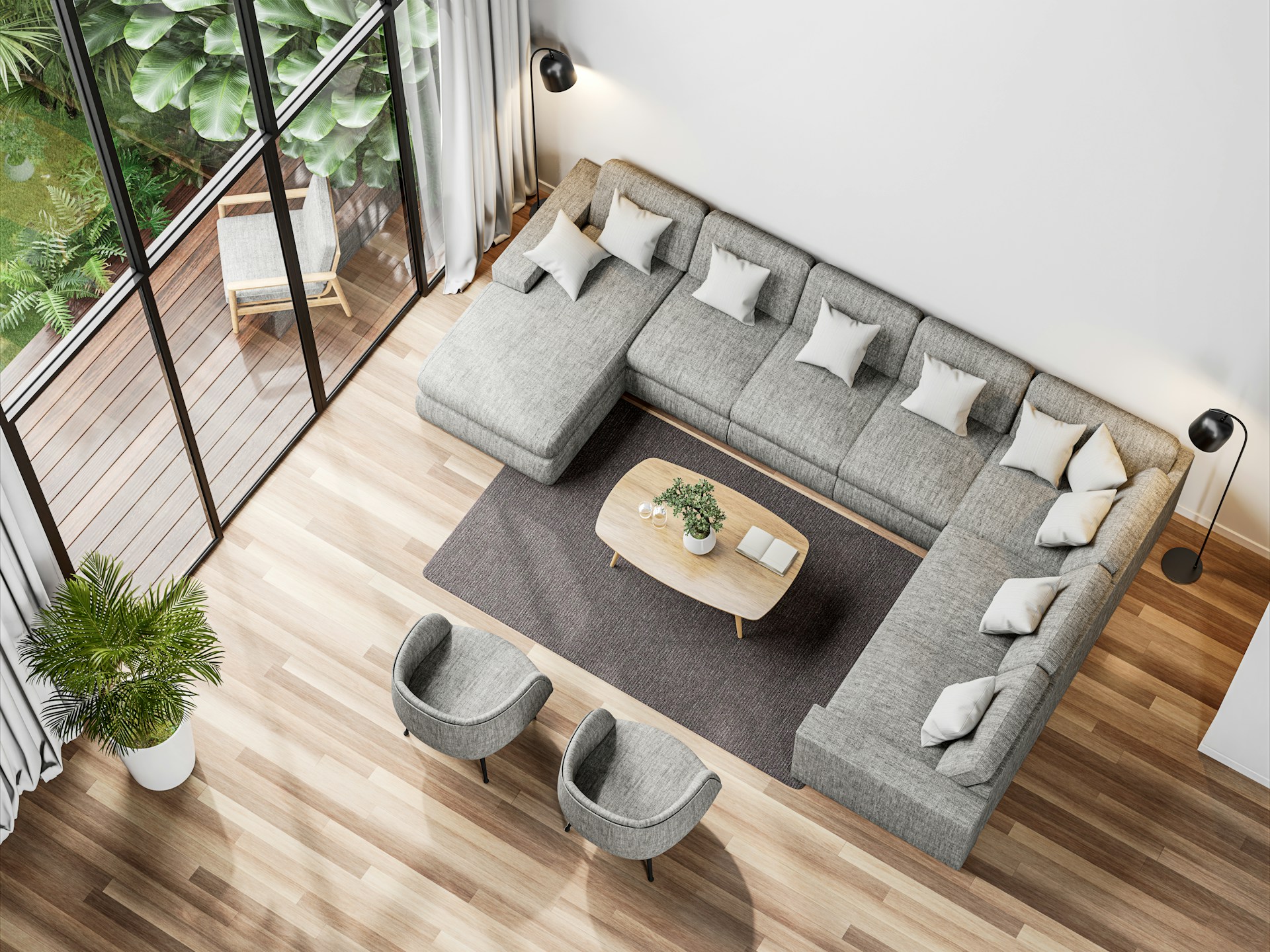How to Budget for Waterproof Flooring: A Comprehensive Guide
Waterproof flooring is a popular choice for homeowners looking for durability and style in high-moisture areas like kitchens, bathrooms, and basements. When planning for waterproof flooring, many considerations can impact the overall cost, from materials like luxury vinyl tile (LVT) and luxury vinyl plank (LVP) to the installation process itself. At Crabtree’s Carpet & Flooring, we believe understanding these factors can help you create a realistic budget that meets your needs without breaking the bank.
Choosing the Right Type of Waterproof Flooring
When considering waterproof flooring, it’s essential to choose a material that fits your lifestyle and aesthetic preferences. Luxury vinyl tile (LVT) and luxury vinyl plank (LVP) are two of the most popular options. They’re durable, stylish, and offer the high-quality waterproofing necessary to handle spills, humidity, and foot traffic in various spaces. Both LVT and LVP are also cost-effective choices compared to traditional hardwood or stone tiles, making them an excellent option for those seeking durability without a high price tag.
Factors That Affect Flooring Costs
Budgeting for waterproof flooring goes beyond the material’s initial cost. Here are key factors to consider when planning for your project:
1. Material Costs
- Luxury vinyl tile and luxury vinyl plank prices can vary based on quality, brand, and style. Higher-quality materials tend to be more durable and may have a longer lifespan, so while the upfront costs might be higher, you’ll often save on maintenance and replacement over time.
2. Installation Process
- The installation process is another significant factor in the budget. Hiring a professional for waterproof flooring installation ensures your new floor is laid correctly, reducing potential future issues like warping or peeling. While this adds to the overall cost, professional installation can be a worthwhile investment, especially for more complex spaces.
3. DIY Installation vs. Professional Installation
- Many homeowners consider a DIY project to save on installation costs. For those with a knack for DIY projects, installing vinyl flooring can be a great way to reduce expenses. However, keep in mind that waterproof flooring requires meticulous preparation and an experienced hand to get it right. Mistakes during a DIY install could lead to costly repairs, potentially negating the initial savings.
- On the other hand, professional installation offers peace of mind and often comes with a warranty, ensuring your flooring remains in good condition.
4. Removing Old Flooring
- If you have existing flooring that needs to be removed, factor this into your budget. Removal costs vary depending on the type of flooring being removed, with materials like tile or hardwood usually costing more to take out than carpet or vinyl. Some homeowners choose to remove old flooring themselves, but be cautious—this step requires specific tools and a lot of physical effort, so hiring a professional may be worth considering.
5. Subfloor Preparation
- A smooth, stable subfloor is essential for any waterproof flooring installation. If your subfloor is uneven or damaged, it will require repairs or leveling. These added steps may increase the overall cost but are necessary to ensure your flooring lasts and performs as expected.
6. Additional Materials and Tools
- Installing waterproof flooring often requires underlayment, adhesives, and other materials to ensure proper installation. Be sure to account for these items in your budget, especially if you’re undertaking a DIY project and need to purchase or rent tools.
Breaking Down the Costs: What to Expect
Material Costs
Material costs are typically the largest component of your waterproof flooring budget. Whether you’re leaning towards LVT or LVP, higher-quality materials offer greater durability, scratch resistance, and longevity. Although these materials may come with a higher price tag, they can also be more cost-effective over time by reducing maintenance costs and increasing the lifespan of your flooring.
Installation Costs
Professional installation is often the safest route for waterproof flooring. Expect to pay more for professional services, but know that the added expense covers precise measurement, correct alignment, and careful handling to ensure a quality finish. A properly installed floor not only looks better but also lasts longer, preventing issues that can arise from improper installation.
Maintenance Costs
Maintenance is another important aspect of budgeting for waterproof flooring. Thankfully, LVT and LVP require minimal upkeep compared to traditional hardwood or tile. Basic maintenance, such as regular sweeping and occasional mopping, can keep your floor looking great for years without needing expensive treatments or repairs. This can be a significant saving in the long term, making waterproof flooring a more cost-effective choice.
Budgeting Tips for Waterproof Flooring
Creating a budget for waterproof flooring doesn’t mean compromising on quality. Here are some strategies to manage your costs effectively:
- Compare Flooring Options at a Waterproof Flooring Store
- At a waterproof flooring store, you can explore various types and price points. This helps you get a sense of what’s available within your budget, allowing you to weigh the pros and cons of each option based on durability, aesthetics, and cost.
- Look for Sales and Discounts
- Flooring retailers often have sales, particularly during certain times of the year. Keeping an eye out for discounts on high-quality waterproof flooring can help you stay within budget without sacrificing your desired look or performance.
- Consider All Costs, Not Just the Price Tag
- When setting your budget, include material costs, installation, removal of old flooring, and maintenance costs. By accounting for each component, you can avoid unexpected expenses and get a clear picture of what your project will truly cost.
- Save with DIY When Possible
- For those who are comfortable with home improvement projects, a DIY install can save a significant amount on installation fees. However, be sure you understand the requirements of the job and feel confident in your ability to install vinyl flooring properly.
- Choose the Right Quality for Your Space
- While premium materials offer the highest durability, they may not be necessary for low-traffic areas. For example, an entryway or kitchen might benefit from top-tier materials, while a guest bedroom might be just fine with mid-range options.
- Plan for the Unexpected
- Unexpected issues can arise, such as damage to the subfloor or finding that your existing flooring is in worse condition than anticipated. Setting aside a contingency budget helps you prepare for any surprises along the way, so you don’t go over budget.
Making the Most of Your Waterproof Flooring Investment
Waterproof flooring offers long-term value and peace of mind, especially in high-moisture areas. By investing in high-quality materials and a professional installation, you can enhance the lifespan and appearance of your floor, ultimately saving on maintenance costs. Budgeting carefully and considering all aspects of the installation process—from choosing the right materials to ensuring your subfloor is in good condition—helps you make the most of your investment.
Whether you opt for luxury vinyl tile or luxury vinyl plank, planning your budget wisely enables you to achieve a beautiful, durable floor that fits both your style and your wallet.




